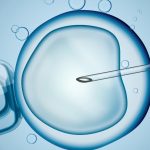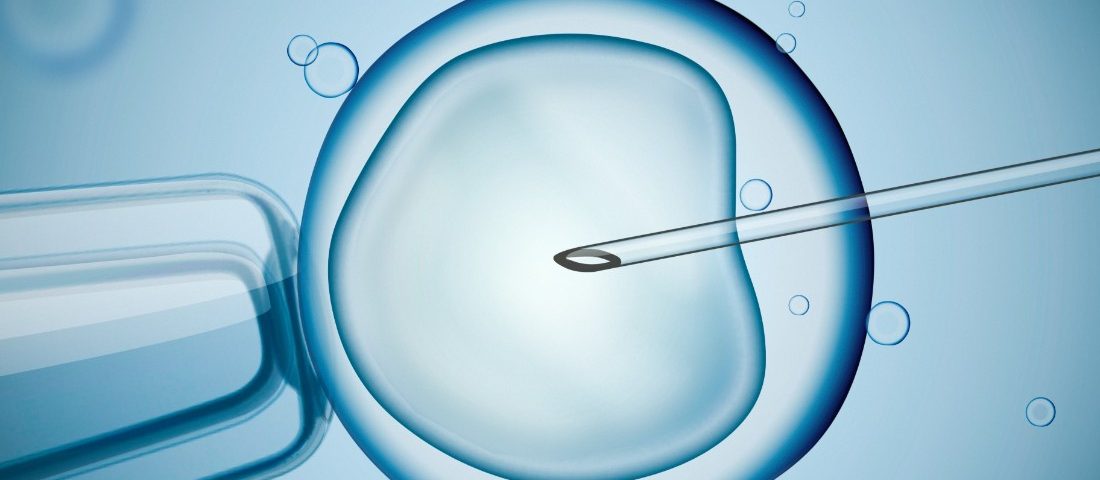
How Much Does a Round of IVF Really Cost? Your Ultimate Guide to Understanding the Price Tag
April 16, 2025
When Was the First IVF Baby Born?
April 16, 2025Who Was the First IVF Baby?

Who Was the First IVF Baby?
Imagine a world where starting a family felt impossible for some people. Then, one groundbreaking moment changed everything. That moment came on July 25, 1978, when a baby named Louise Joy Brown was born in Oldham, England. She wasn’t just any baby—she was the first human ever conceived through in vitro fertilization, or IVF. Her birth didn’t just bring joy to her parents, Lesley and John Brown; it sparked a revolution in science and gave hope to millions struggling with infertility. So, who was this history-making baby, and why does her story still matter today? Let’s dive into the incredible tale of Louise Brown and the ripple effects of her arrival.
The Birth That Changed the World
Louise Brown’s story begins with her parents, a regular couple from Bristol, England, who dreamed of having a child. For nine years, they tried everything, but Lesley’s blocked fallopian tubes made natural conception impossible. Back then, infertility was a quiet struggle with few solutions. That’s when two brilliant minds—Dr. Patrick Steptoe, a gynecologist, and Dr. Robert Edwards, a scientist—stepped in with a bold idea: what if they could fertilize an egg outside the body and place it back in the womb?
On November 10, 1977, they made their move. Using a technique called laparoscopy, Steptoe removed one of Lesley’s eggs. Edwards then combined it with John’s sperm in a petri dish (not a test tube, despite the nickname “test-tube baby”!). After a few days, the tiny embryo was placed into Lesley’s uterus. Nine months later, at 11:47 p.m., Louise arrived via cesarean section, weighing 5 pounds, 12 ounces. The world watched in awe—and sometimes disbelief—as the first IVF baby took her first breath.
Her birth wasn’t just a personal victory. It proved that IVF could work, opening doors for countless families. Today, over 8 million babies have been born through IVF worldwide, and Louise’s story remains the starting point of it all.
What Made Louise’s Birth So Special?
Picture this: it’s the 1970s, and the idea of creating life in a lab sounds like science fiction. People weren’t just amazed—they were divided. Some called it a miracle; others worried it was “playing God.” Louise’s birth stood out because it was a leap into the unknown, backed by years of grit and innovation.
Steptoe and Edwards had been working together since the late 1960s, experimenting with animal embryos and refining their methods. By 1978, they’d failed over 100 times with human patients before succeeding with Lesley. Their breakthrough wasn’t luck—it was persistence. Louise became living proof that science could rewrite the rules of reproduction. And unlike natural conception, where everything happens inside the body, IVF gave doctors a front-row seat to the process, paving the way for future advances like genetic screening and embryo freezing.
Her arrival also came with a spotlight. Newspapers splashed her picture everywhere, and debates about ethics erupted. Was this the future of humanity or a dangerous experiment? Louise, of course, didn’t choose the fuss—she just grew up as a normal kid who happened to make history.
Growing Up as the First IVF Baby
So, what’s it like to be the world’s first IVF baby? Louise has shared glimpses over the years, and her life is surprisingly down-to-earth. She grew up in Bristol with her parents and, later, her younger sister Natalie (also conceived via IVF in 1982). As a kid, she didn’t fully grasp her fame. “I just thought it was something neat about me,” she once said in an interview. But as she got older, the weight of her story sank in.
School wasn’t always easy—some classmates teased her about being a “test-tube baby.” Yet Louise took it in stride, thanks to her supportive family. She worked regular jobs, like at a nursery and later as a postal worker, and married Wesley Mullinder in 2004. They had two sons, Cameron and Aiden, both conceived naturally. In a twist of fate, her sister Natalie became the first IVF baby to have kids of her own, proving the technology’s ripple effects across generations.
Louise’s normalcy is what makes her story so powerful. She wasn’t a lab-grown superhuman—just a person whose birth opened a door. In her 2015 book, My Life as the World’s First Test-Tube Baby, she wrote about balancing her unique start with an ordinary life, showing how IVF babies are, at heart, just like anyone else.
Quick Quiz: How Much Do You Know About Louise?
Think you’ve got the basics down? Test yourself with these quick questions! Jot down your answers and check them at the end of this section.
- In what year was Louise Brown born?
- What city in England welcomed the first IVF baby?
- Who were the two scientists behind her conception?
(Answers: 1. 1978, 2. Oldham, 3. Patrick Steptoe and Robert Edwards)
The Science Behind Louise’s Birth
Let’s break down how Louise came to be—it’s simpler than you might think! IVF stands for “in vitro fertilization,” which means “fertilization in glass.” Here’s how it worked back in 1978:
- Egg Retrieval: Steptoe used a laparoscope—a tiny camera and tool—to pluck an egg from Lesley’s ovary. This was done under anesthesia, and timing was everything since Lesley wasn’t given fertility drugs to produce extra eggs like today’s patients often are.
- Fertilization: In a lab, Edwards mixed the egg with John’s sperm in a petri dish. They watched closely as the sperm fertilized the egg, forming an embryo.
- Embryo Transfer: After two and a half days, the embryo—now a tiny ball of eight cells—was placed into Lesley’s uterus using a thin tube. Then, they waited and hoped.
This was bare-bones IVF compared to now. Today, women often take hormones to boost egg production, and embryos can be frozen or tested for genetic issues. Back then, it was a one-shot deal with no safety net. The success rate was under 10%, making Louise’s birth a long shot that paid off.
Research from the time shows how risky it was. A 1973 attempt by the Monash University team in Australia ended in an early miscarriage, and Steptoe and Edwards had their own setbacks, like an ectopic pregnancy in 1976. Louise’s case worked because the timing was perfect—her embryo implanted at just the right moment in Lesley’s cycle.
Why Louise’s Story Still Matters Today
Fast forward to 2025, and IVF is everywhere. In the U.S. alone, it accounts for about 2% of births each year, according to the CDC. Globally, millions owe their existence to the path Louise blazed. But her story isn’t just a history lesson—it’s a reminder of how far we’ve come and where we’re headed.
For one, infertility rates are climbing. A 2023 study from the World Health Organization found that 1 in 6 couples worldwide face challenges conceiving. Factors like delayed childbearing, pollution, and stress are partly to blame. IVF has become a lifeline, and Louise’s birth showed it was possible. Her legacy also fuels ongoing debates about access—should IVF be affordable for everyone, or just those who can pay?
Plus, her story inspires new tech. Scientists are now exploring “IVF 2.0” ideas, like growing eggs from skin cells or using AI to pick the best embryos. None of this would’ve happened without that first step in 1978. Louise herself stays connected to the cause, speaking at fertility events and advocating for awareness.
IVF Then vs. Now: A Side-by-Side Look
Curious how IVF has evolved since Louise’s day? Check out this comparison:
| Aspect | 1978 (Louise’s Time) | 2025 (Today) |
|---|---|---|
| Egg Stimulation | No drugs, one egg naturally collected | Hormone shots for multiple eggs |
| Success Rate | Less than 10% per cycle | Up to 50% for women under 35 |
| Embryo Storage | No freezing option | Cryopreservation standard |
| Genetic Testing | Not available | Common to screen for disorders |
| Cost (U.S. estimate) | Around $5,000 (adjusted) | $12,000–$15,000 per cycle |
This table shows how IVF has transformed from a risky experiment into a polished process—thanks to pioneers like Steptoe and Edwards.
The Unsung Heroes: Lesley and John Brown
Louise may be the star, but her parents deserve a shoutout. Lesley and John weren’t scientists or celebrities—they were a truck driver and a homemaker willing to take a chance. Lesley endured invasive procedures with no guarantee of success, all while facing public scrutiny. “People thought I was some kind of freak,” she later recalled. John stood by her, shielding their family from the media storm.
Their bravery wasn’t just personal—it was universal. By agreeing to try IVF, they gave hope to others in their shoes. Lesley’s pregnancy was watched by the world, yet she stayed focused on one thing: becoming a mom. After Louise, they welcomed Natalie, proving IVF wasn’t a fluke. Their quiet courage turned a science experiment into a human triumph.
Three Things You Didn’t Know About Louise’s Journey
Plenty of articles cover Louise’s birth, but some details slip through the cracks. Here are three lesser-known gems that add depth to her story:
1. The Ethical Firestorm Was Intense
When Louise was born, not everyone cheered. Religious groups, like the Catholic Church, argued IVF defied nature. Scientists faced death threats, and the U.K. government hesitated to fund research. It took until 1990 for the Human Fertilisation and Embryology Act to regulate IVF, showing how controversial her birth really was.
2. Her Name Almost Wasn’t Louise
Lesley and John didn’t settle on “Louise Joy” right away. They considered other names but chose “Louise” after a nurse who supported them, and “Joy” to reflect their happiness. It’s a small detail, but it humanizes the headlines.
3. She’s Still Shaping IVF Today
Louise isn’t just a footnote—she’s active in the fertility community. In 2023, she joined a panel at Bourn Hall (the clinic founded by Steptoe and Edwards) to mark 45 years of IVF. She’s also pushed for better education about infertility, a topic still taboo in many places.
These nuggets show there’s more to Louise than her “first baby” title—she’s a bridge between science, society, and personal impact.
How IVF Has Grown Since 1978
Louise’s birth was the spark, but IVF has since exploded into a global phenomenon. Let’s zoom out and see how it’s evolved:
- 1980s: Doctors started using drugs like clomiphene to boost egg production, bumping success rates to 20-30%. The first donor egg baby arrived in 1983, helping women with ovarian issues.
- 1990s: Intracytoplasmic sperm injection (ICSI) debuted, injecting a single sperm into an egg to tackle male infertility. Freezing embryos became routine, giving couples more chances.
- 2000s: Preimplantation genetic diagnosis (PGD) let parents screen embryos for diseases like cystic fibrosis, stirring “designer baby” debates.
- Today: In 2025, IVF labs use AI to analyze embryo health, and success rates for young women hit nearly 50%, per the American Society for Reproductive Medicine. Costs, though, remain a hurdle—averaging $15,000 per cycle in the U.S.
This growth isn’t just tech—it’s lives. In 2010, Robert Edwards won a Nobel Prize for his work, cementing IVF’s place in history. Louise’s birth kicked off a chain reaction that’s still unfolding.
Poll: What’s Your Take on IVF?
Pause for a sec and weigh in! Pick one and share your thoughts with a friend—or just mull it over:
- IVF is a game-changer for families and should be more affordable.
- It’s amazing science, but I worry about ethical limits.
- I’m not sure—it’s cool but feels a bit unnatural.
What do you think? Louise’s story might just sway you.
Challenges and Controversies IVF Still Faces
IVF’s journey hasn’t been all smooth sailing. Even now, it stirs up big questions:
- Access: In the U.S., insurance rarely covers IVF, leaving many out. A 2024 report from Resolve: The National Infertility Association found 70% of patients pay out of pocket, often draining savings or taking loans.
- Ethics: Can we edit embryos to pick traits like eye color? Should unused embryos be donated, researched, or discarded? These debates rage on, with no easy answers.
- Health Risks: Multiple births (twins or more) from transferring several embryos raise risks like premature delivery. A 2022 study in Fertility and Sterility linked IVF to a slight uptick in birth defects, though the cause isn’t clear—age, infertility, or the process itself?
Louise’s birth forced the world to grapple with these issues, and we’re still figuring them out. Her normal, healthy life counters some fears, but the questions linger.
What’s Next for IVF—and Louise’s Legacy?
Looking ahead, IVF is poised for more breakthroughs. Scientists are testing “in vitro gametogenesis,” which could turn skin cells into eggs or sperm, per a 2024 paper in Nature. Imagine infertile couples or same-sex partners creating biological kids without donors—that’s the dream. Automation, like lab-on-a-chip systems, might also slash costs, making IVF more accessible.
Louise’s legacy ties into this future. She’s not just a “first”—she’s a symbol of possibility. Her kids, born naturally, show IVF doesn’t alter the next generation. And her advocacy keeps the conversation alive. In a 2023 X post, she wrote, “Infertility doesn’t define you—options do.” It’s a nod to how her birth expanded choices.
Your IVF Action Plan: 5 Steps to Learn More
Inspired by Louise and curious about IVF? Here’s how to dig deeper, whether for yourself or just to know more:
- Talk to Someone: Chat with a friend or family member who’s done IVF. Real stories beat stats any day.
- Visit a Clinic: Many offer free info sessions. Check one out to see the process up close.
- Read Up: Grab The IVF Revolution by Robert Winston for a newbie-friendly history.
- Check Costs: Look up local IVF prices and insurance rules—knowledge is power.
- Follow the News: Watch for updates on IVF tech (like AI or stem cell advances) to see what’s coming.
Louise’s story started with a leap—yours could too, even if it’s just learning something new.
A Personal Take: Louise Through My Eyes
Here’s where I get real: Louise Brown feels like a quiet hero to me. She didn’t ask for fame, yet her birth reshaped families—including, indirectly, mine. My cousin struggled with infertility for years until IVF gave her twins in 2022. Seeing their chubby faces at Thanksgiving, I couldn’t help but think of Louise. She’s not a distant figure; she’s the root of moments like that.
What strikes me most is her humility. She could’ve cashed in on her story, but instead, she built a normal life while still honoring her place in it. That balance—embracing your impact without letting it define you—is rare. It’s why her story sticks with me, and maybe it’ll stick with you too.
Wrapping Up: Louise’s Lasting Echo
Louise Joy Brown wasn’t just the first IVF baby—she was a spark that lit up science, ethics, and hope. From a petri dish in 1978 to millions of families today, her birth reshaped what’s possible. She grew up ordinary yet extraordinary, a living bridge between struggle and solution. As IVF evolves—tackling costs, ethics, and new frontiers—her story reminds us of the human heart behind the headlines.
So, next time you hear about a “miracle baby,” think of Louise. She’s proof that big changes start small, often with one brave family and a wild idea. What do you think her legacy means for the future? I’d love to hear your take—drop a comment or share this with someone who’d get it. After all, her story’s still unfolding, and we’re all part of it now.

